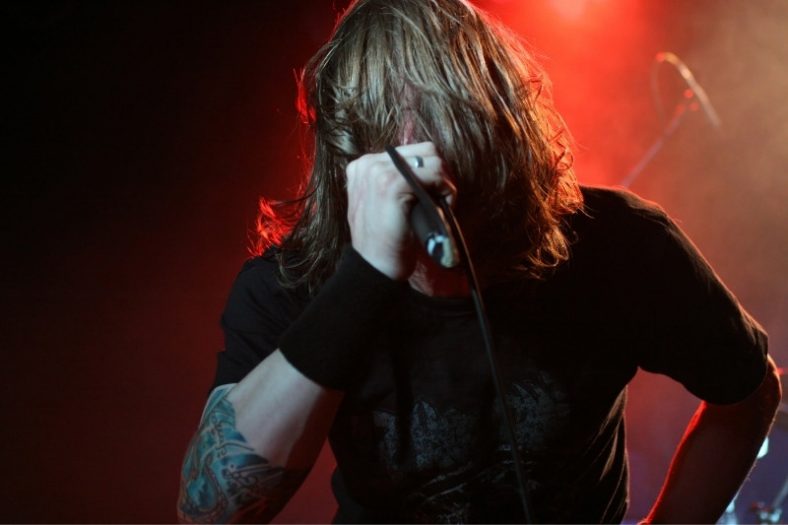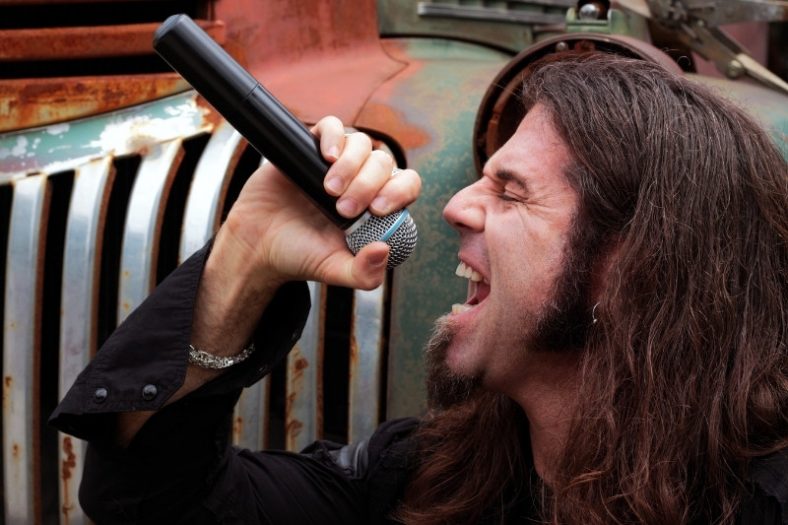Metal Screaming and Growling (How To, Warm-Ups, Vocal Health)
The hardest sub-genres of metal, such as black metal, metalcore, and others, often have a unique kind of screaming or growling technique. Metal growling is not just shouting. It is a particular technique and warm-ups that need to be done correctly to sound great and protect your vocal health.
Metal singers growl because it’s a defining feature of the genre, it suits the instruments and effects, it often places more emphasis on the singer, and fits the genre’s darker sound.
This article discusses how to metal scream safely, along with warm-ups and tips.
Contents
Why Do Metal Singers Growl?
While many of you have thoroughly enjoyed the growling and screaming, some of you probably wonder why the singers are doing it in the first place.
A Defining Feature of the Genre
You see, this kind of singing has always had an association with metal music. It’s a genre norm and is generally an expectation from the singer and the music itself.
Suits the Instruments
The selection of instruments that are a prominent part of metal music generally goes well with this type of singing. The screaming and growling amplify and accentuate the distortions, “noise,” and “aggressive” vibes generated from a metal song.
Darker Sounds Fit the Style of the Genre
As mentioned earlier, the overall theme of this genre, metal music, is somewhat hardcore and complex. It is dark and aggressive, so screaming adds to the same emotion and fits the particular style.
Less Emphasis on the Singer
If you’ve ever listened to a piece of metal music, you’ve probably noticed that distorted guitars and big drums are at the forefront.
Screaming and growling give an optimum layered nuance of the singing factor to the music without taking away the attention from the metal.
It puts just enough spotlight on the signer but still makes sure you’re focusing on the rest of the band.
Regular Singing wouldn’t fit in as Well
Overall, you’ve probably understood that regular, soft, and empathetic singing just doesn’t go well with the dark, overwhelming metal music. The two typically don’t match so well and have a contradicting feel to them.
What are the Different Types of Metal Growls?
There is no one type of metal growling and screaming. There are plenty, each fit for a particular kind of musical piece and vocalist.
Some of the significant kinds are:
- Mid-Range Growl
- Low Growl
- Low Guttural
- Pig Squeal
- Inhale scream
- Fry scream
- Tunnel throat scream
- KVLT Scream
How do you Growl in Death Metal?
Below are the steps that you should follow to master the technique of growling.
Warm-up
Screaming and growling are stressful activities, and your vocal cords also consist of delicate tissues. Like any other muscle, they too require a warm-up session.
- A simple technique involves preparing half a glass of water with one teaspoon of salt and a quarter teaspoon of baking soda. You should use lukewarm water and gargle to moisten your vocal cords and prepare yourself for the extraneous activity. Rinse for 30 seconds and make sure the water is not very hot.
- Once the vocal cords are ready, go ahead with the practical, warm-ups. These warm-up activities include practicing the complex and harsh vocals involved in death metal, starting from simple and easy while gradually increasing the complexity.
- Start with practicing “hee-haw” sounds, similar to the sounds that donkeys make, as a vocal exercise. Practice it in different pitches and intensities. Start with simply and gently, then gradually intensify the challenge.
- Another warm-up exercise is growling “Wow” and screaming, “Yeah.” This activity helps you prepare and exercise your deeper vocals.
Protection
- Sucking on an elm lozenge is a piece of popular advice by experts to protect your vocal cords during metal singing.
- It lubricates the vocal cords and reduces friction while you use them harshly. You can use these slippery tablets while you’re warming up.
Relax the Throat and Hang the Mouth Open.
- For authentic death metal singing, the sound must come from deep inside your diaphragm. Thus, you should relax your throat and let the vocal system do its job.
- Additionally, your mouth’s shape has a vital role in the kind of sound you produce. If harsh metal sounds, screaming, and growling are what you’re looking for, then let the mouth relax and hang open.
Take a Long, Deep Breath.
- As mentioned above, the sound needs to come from your diaphragm. Let the belly inflate, by taking a deep breath, and expelling all the air from the diaphragm and not just through your lungs.
- There is a difference between breathing from your stomach and breathing from your chest. Therefore, make sure you’re paying attention to this part.
- The simplest way to differentiate between the two is to place your hands on your chest and see if they are moving while you breathe. If yes, then you’re doing it wrong and breathing through the chest.
Now, Expel the Breath Upwards.
- Utilize all your muscles to put pressure on your diaphragm and push the air out.
- Remember not to use your vocal cords just yet. First, tense up your abdomen and diaphragm and use absolute force to expel the air forcefully.
Add the Growling.
- Use the back of your throat to add growling sounds as you expel the air. These sounds will be similar to gurgling and seem raspy.
- If this part hurts your throat, then either you’re not warmed up nicely, or not expelling the air correctly.
Add Lyrics.
- As soon as you successfully go through the above steps, start adding lyrics to the growling sounds and proceed with singing as per your requirement.
Just remember that learning this skill is not a matter of hours or days. Death metal singing is a professional technique and takes quite some time to perfect. If you’re not satisfied with your performance immediately, don’t lose heart and keep practicing. If you’d like to see a detailed video explaining this entire process, you can check out this link as well.
Does Metal Screaming Ruin Your Vocal Cords and Voice Quality?
We’re not medical experts, but based on our research and anecdotal evidence, if done with the correct technique and warm-ups, metal screaming does not necessarily cause any long-term damage. But make sure to listen to your body and stop if you start feeling very sore.
Keep in mind that even singers of different genres that use pretty good techniques can still have vocal issues when they put their vocal cords through too much stress. Therefore, make sure to use suitable common sense and listen to your body.
Since you’re still in the growing and learning phase and making mistakes and the sudden change in stress on the cords is something you’re not familiar with, you might have to deal with a little discomfort initially.
If you feel that the metal growling is causing you problems such as throat discomfort, then you should stop and take some rest. Then when you get back to it, reassess your technique and make sure to warm up correctly.
Conclusion
Metal screaming and growling have been an integral part of many metal sub-genres for a long time now. While it may sound satisfying and impressive, a lot goes on behind what may seem like just screaming.
Training, techniques, methods, and hard work all merge to create your favorite metal music pieces. Whether you are a metal vocalist or generally interested in the concept, the information above helps you navigate the concept of metal screaming in its entirety, and how to do it the right way.









